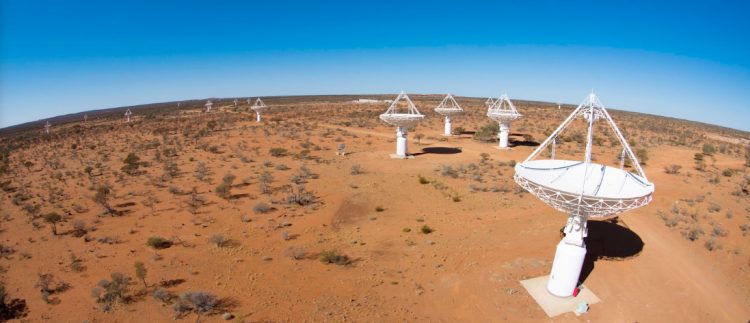New Proof That Mysterious Fast Radio Bursts Have Emerged from Two Different Galaxies.
“Our newly discovered FRB is called 180924. We determined it originated in a galaxy about 4 billion light-years away from Earth in the constellation Grus, the crane.”— CSIRO’s Australian SKA Pathfinder Radio Telescope

June 28, 2019 Murchison, West Australia – Scientists at the Australian Square Kilometre Array Pathfinder, also known as ASKAP, in their own words have “managed to locate the home galaxy of another single FRB — the first time anyone has done this. In 2017, another team determined the home galaxy of a repeater, but that’s relatively easy job: it repeats, so you get a chance to point other telescopes at that spot on the sky. Our challenge was much harder. Our newly discovered FRB is called 180924. We determined it originated in a galaxy about 4 billion light-years away from Earth in the constellation Grus, the crane.”
Since 2007 when the first intense and mysterious radio wave flashes lasting only a few milliseconds from outer space were discovered, astronomers have been trying to confirm what they are exactly and if they are scattered throughout our universe or emit from a certain region. Now in the June 27, 2019, Science journal, ASKAP scientists have published that a brand new FRB called 180924 that is not from the center of a galaxy, as some astronomers have been predicting, but this FRB in the Grus constellation is on the outskirts of a galaxy which is “1,000 times bigger and contains much older stars” than the first discovered FRBs since 2007.
Breakthrough Discovery: FRBs From Very Different Galaxies

So astronomers can now say with confidence that the Fast Radio Bursts are coming from more than one galaxy and they now know better how to pinpoint search for FRBs. “FRBs interact with matter as they travel through space and are altered by all these encounters. We can “read these alterations, combine them with how far the FRBs have come from, and work out how much matter they’ve met.”
The next step is to keep using the new research tools to find more Fast Radio Bursts and unravel where the intense and mysterious energy bursts fit into cosmic evolution of our 13.8-billion-light-year-old universe.
No comments:
Post a Comment